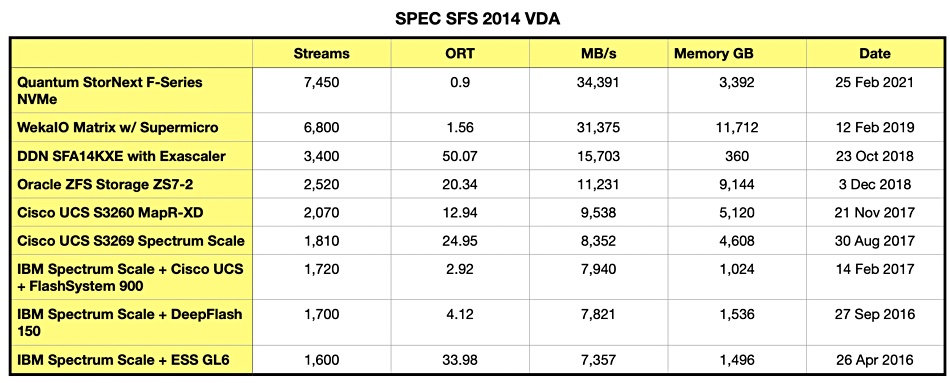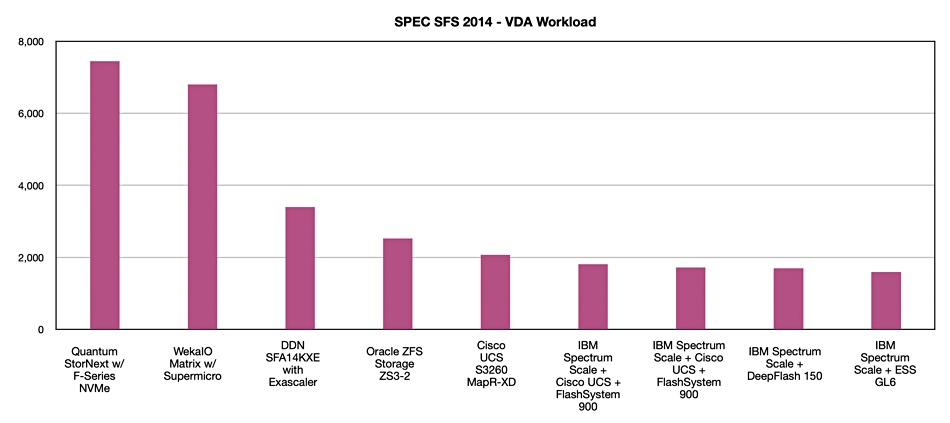Quantum StorNext is faster than WekaIO in the SPEC SFS video workload benchmark, recording the top numbers for video stream processing, response time and bandwidth.

Brian Pawlowski, Quantum’s chief development officer, said the test results “clearly demonstrate that StorNext is the fastest file system on the planet for video workloads. And thanks to the architecture of the StorNext File System, it achieved these record-breaking results with substantially less hardware than the nearest competitor.”
StorNext is a scale-out, multi-tiered file data management product and parallel access file system designed for entertainment and media applications. SPEC is the Standard Performance Evaluation Corporation, a non-profit body formed to establish, maintain and endorse standardised benchmarks and tools to evaluate performance and energy efficiency.
The SPEC SFS 2014 benchmark tests four aspects of a filer’s performance:
- Number of simultaneous builds that can be done (software builds)
- Number of video streams that can be captured (VDA)
- Number of simultaneous databases that can be sustained
- Number of virtual desktops that can be maintained (VDI)
As detailed by a SPEC document, the StorNext V7.0.1 parallel filesystem software accessed files on ten Quantum all-flash F-Series systems. These each had ten Micron 15.36TB 9300 NVMe SSDs, 150.36TB per mode, for a total of 1.5PB of flash.
There were 14 client systems running Quantum Xcellis Workflow software and a separate metadata-controlling server. A 32-port 100GbitE Arista switch connected the storage and the accessing servers. Clients and the StirNext system were connected using via iSER (iSCSI Extensions for RDMA).
We have included the Quantum results in a table listing other suppliers VDA numbers.

ORT is Overall Response Time and is a measure of latency. Streams refers to the number of video streams that can be processed. A chart compares the MB/s numbers from each supplier and shows how WekaIO and Quantum have surged ahead of the competition.

Scale-out parallel file systems and NVMe SSDs provide a winning combination at this benchmark and, by extension, in video workflow applications.







